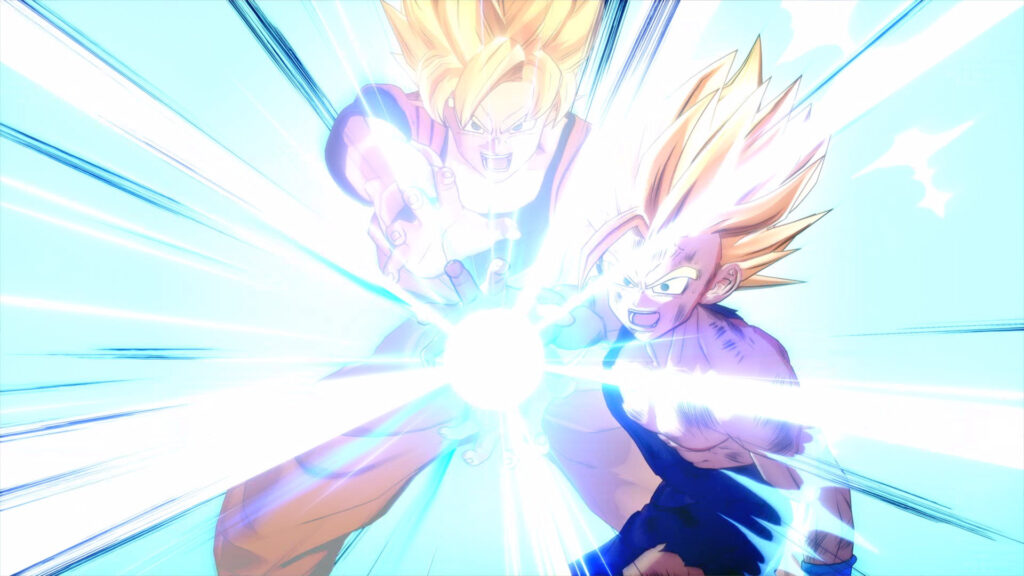
The Dragon Ball franchise has spawned a ton of games over the decades. Being a classic anime about martial arts and comically over-the-top fights, its only natural that most of the franchise’s video game adaptations are fairly traditional fighting games. With Dragon Ball Z: Kakarot, however, Bandai Namco Entertainment decided to enlist the help of CyberConnect2 to craft a more story-driven RPG experience that explores the anime’s adventure, and character development sides. The result is a game that isn’t particularly great as an RPG, but is so crammed full of carefully crafted nostalgia that even a casual fan of Dragon Ball Z will find a lot to enjoy.
Dragon Ball Z: Kakarot
Developer: CyberConnect2 Co. Ltd.
Publisher: Bandai Namco Entertainment
Platforms: Windows PC (Reviewed), PlayStation 4, Xbox One
Release Date: January 17th, 2020
Players: 1
Price: $59.99
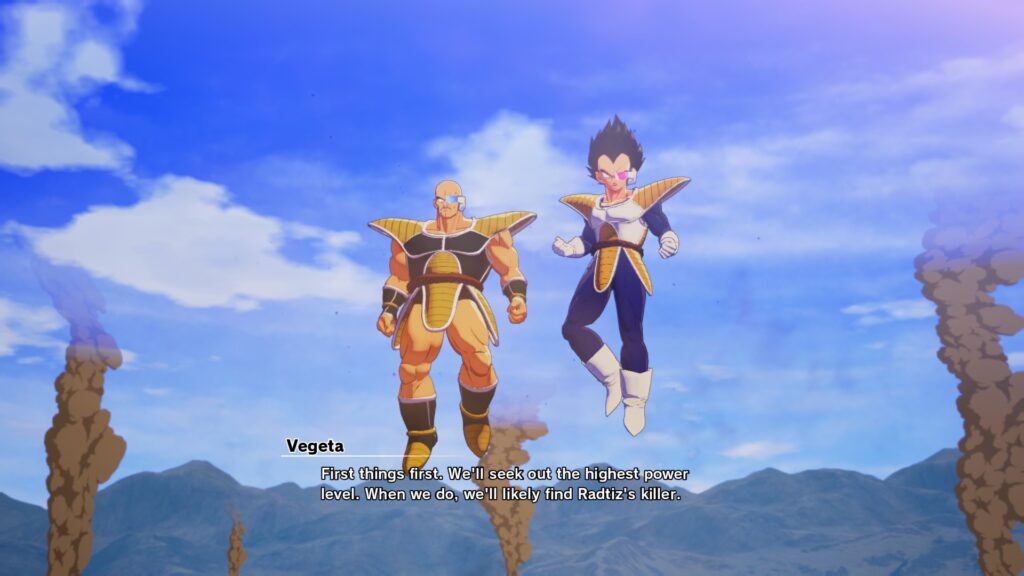
If you were one of the many budding anime fans that grew up with Dragon Ball Z, then you already know the entire story of Kakarot. The game is a very faithful retelling of the anime, and it’s the perfect way to revisit the series if, like myself, you find the prospect of sitting down to re-watch nearly 300 episodes pretty daunting.
Dragon Ball Z: Kakarot is structured in a way not unlike the original anime, with the various sagas divided into “episodes” that contain the show’s key fights and story events.
The game covers almost all the major events of the anime, trimming down a lot of the filler that stretched many of the fights across dozens of episodes. Unfortunately, this often includes some events that many fans probably would have liked to see recreated in the game.
One of the most notable is probably Goku’s journey across Snake Way and subsequent training with King Kai. This consists largely of just one brief introduction, and a few text boxes.
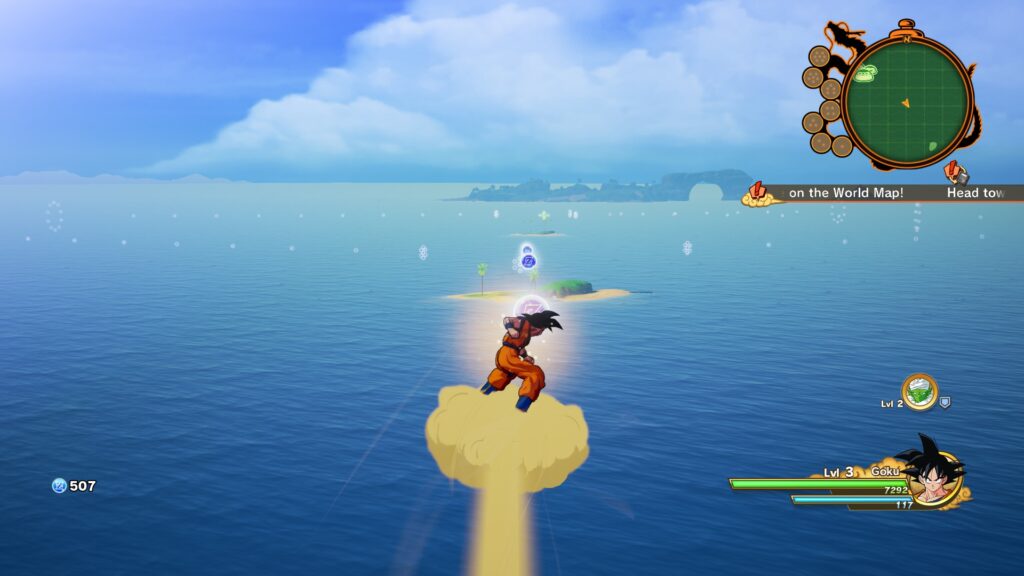
Kakarot is a semi-open world experience, with an overworld map that divides Earth and other places into large areas based on locations throughout the series.
Between sagas, you’ll often be presented with intermission episodes. These allow you to travel around the game world collecting items, completing side activities, and training to unlock new abilities.
The game is full of things to do and collect when you are between main stories. All of these extra activities can greatly extend the game well past its 30 to 40 hour main storyline, but effectively replace the tedious filler episodes of the anime with tedious filler side quests and collectibles.
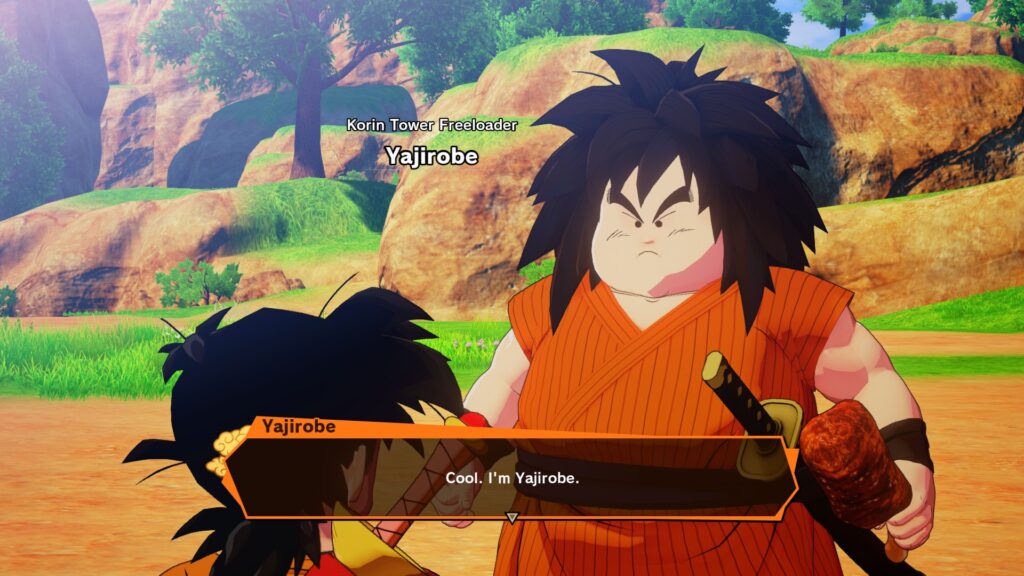
The most noteworthy of the game’s side activities are side quests, and unfortunately they are all pretty formulaic and uninteresting. The vast majority of the side quests involve going to fetch some items, or going somewhere to fight a generic band of enemies.
This is rather disappointing, because the side quests could have been a chance to have meaningful interactions with the franchise’s vast collection of colorful characters. Even many characters from the original Dragon Ball make appearances through these side quests, but aside from a few outliers, none of them do anything interesting with these cameos.
The developers didn’t even bother to include any voice acting in these quests, aside from some quips taken from elsewhere in the game that don’t even remotely match what the text boxes say.
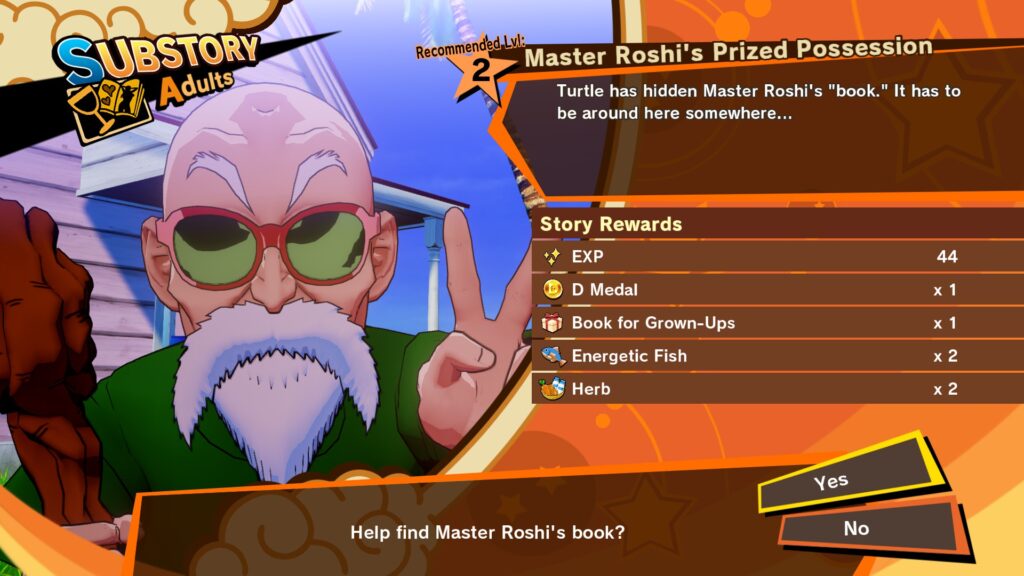
The only meaningful thing many of these side quests unlock is a new emblem for the Community Board system, a part of the game’s character progression. There are seven Community Boards, each of which governs a specific aspect of character development.
The Z Warrior Community, for example, offers passive combat buffs, while the Adult Community is related to increasing the money you make and reducing prices at vendors.
Each Community Board has a character at the center, with interconnecting slots all around them forming thematic patterns. The emblems you acquire throughout the game represent the various characters from the Dragon Ball franchise, and each one has seven proficiency stats that determine which board they are best suited for.
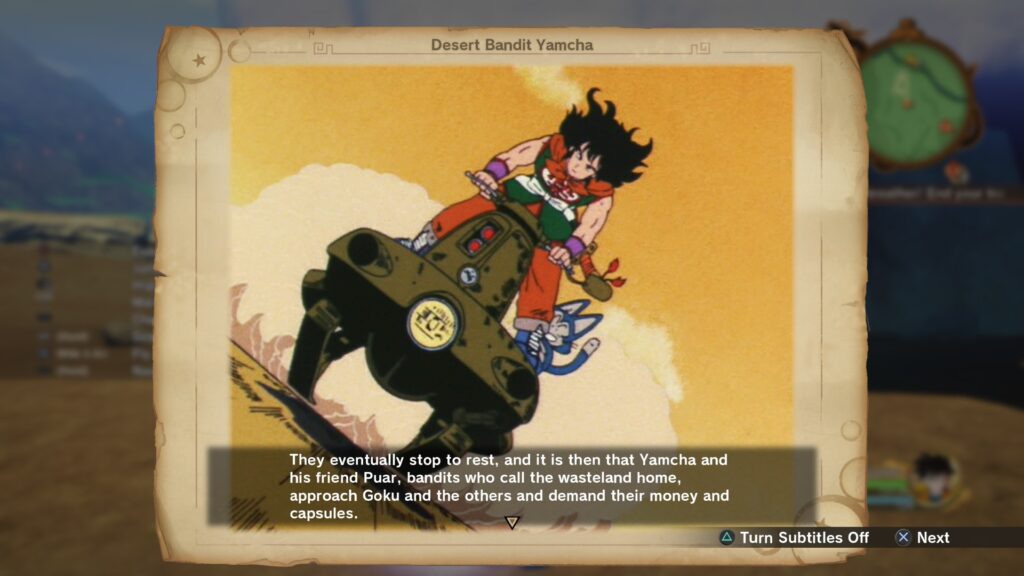
You can level up characters by giving them gifts, which increase their friendship gauge and their stats. Characters will give you gifts in return when you hit certain thresholds on the gauge.
Each character also has relationships, and slotting characters together in certain combinations can unlock larger bonuses.
For example, slotting Gohan and Goten together with Chi-Chi unlocks the Chi-Chi And Her Children bonus, while slotting Goku, Piccolo, Tien, and Vegeta together unlocks From Enemies To Friends.
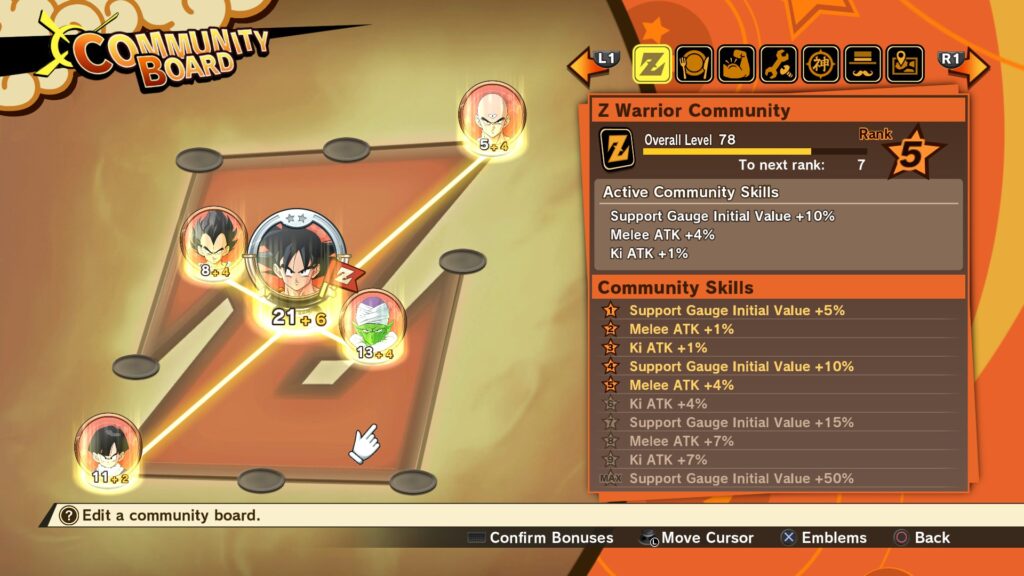
Typically the more characters you need to create a combination, the more significant the bonus. The layouts of the boards, combined with the character relationship sets and gifts, means that there’s a decent amount of strategy involved in the Community Boards mechanic to maximize your bonuses.
Other activities you’ll find across the world include things like collecting ingredients to cook meals, races, fishing, and just finding hidden collectibles and useful items.
Some of these collectibles include photos that show a famous scene from Dragon Ball, accompanied by a brief recap of the event it depicts. The world is also littered with Z Orbs of various colors, which play into the game’s combat skill system.
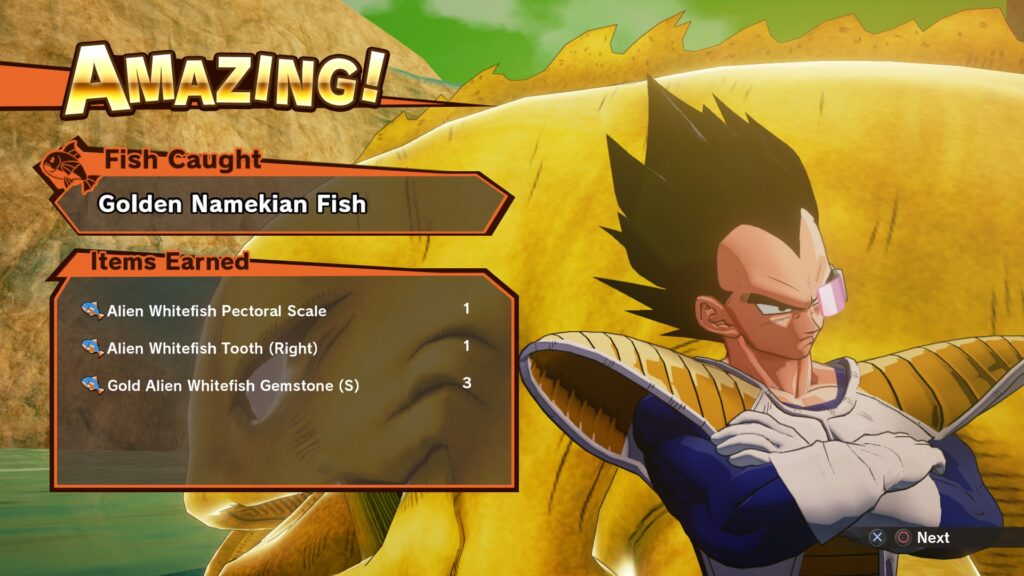
Each character has a pretty large skill tree, and while some generic skills are shared between characters, most of it involves spending Z Orbs to power up your signature moves.
Unfortunately, the skill tree only gives you the illusion of choice most of the time. The majority of the skills are unlocked not through leveling up, but by progressing in the story.
This means that there isn’t much of an incentive to fight against roaming enemies and grind for experience, as you can’t really get better until the game’s story allows you to. On the other hand, this also means that Kakarot is largely devoid of level grinding to get past tough parts in the story.
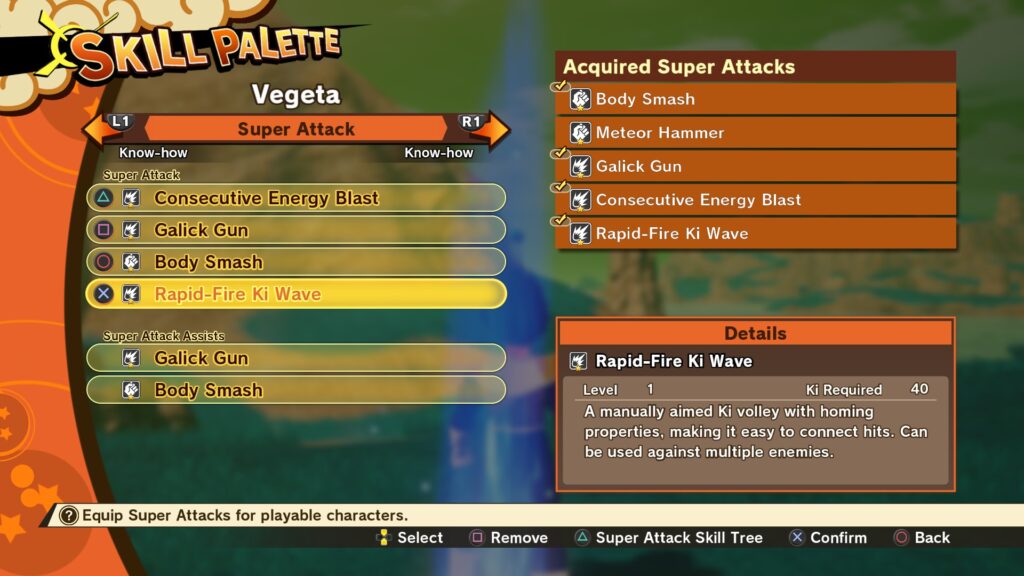
That isn’t to say that there’s no prep work at all before key fights. The game’s cooking system is probably where you will spend most of your time when it comes to side activities.
The world is full of fruit trees, fish, and other animals that you’ll want to harvest for ingredients so you can create a wide array of dishes. Each dish will have passive bonuses attached to them. The most complicated dishes that require the best ingredients will obviously offer the largest bonuses.
You can also visit Chi-Chi and ask her to make you a full course meal. These meals combine multiple dishes together, and offer huge stat bonuses. If you are stuck on a fight, the bonuses that come with eating a few dishes before battle can often give you just enough of an edge to win.
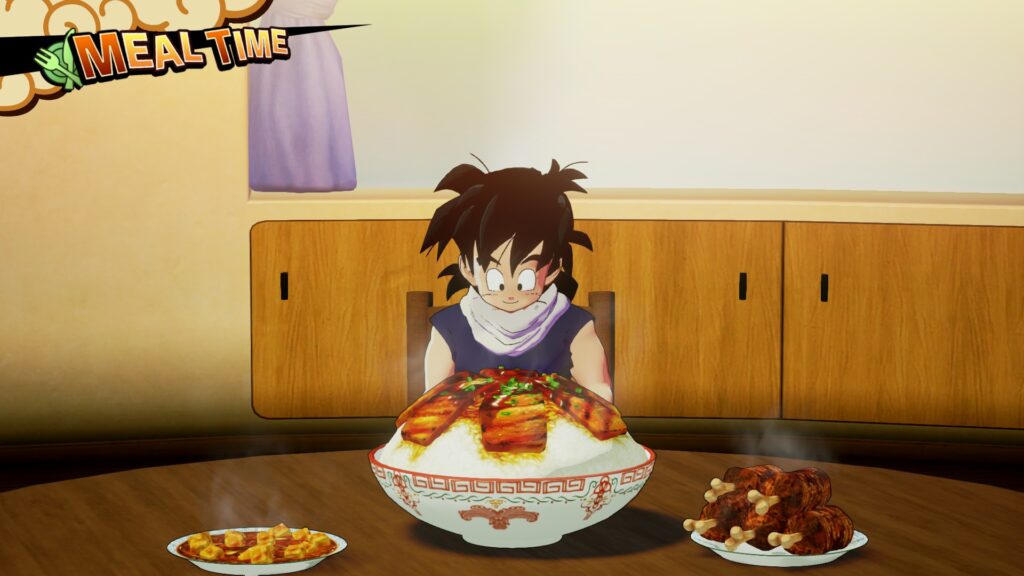
Kakarot’s open world, just isn’t all that interesting in general. The side activities and RPG elements aren’t particularly compelling, and the maps in general are just barren. Sure there are key places to visit, but the maps just feel so dull and lifeless.
The cities don’t have anything in them besides a few vendors, with most of the maps being sparse country sides and wilderness devoid of anything to really explore.
The most interesting part of the maps are stumbling upon cameos from characters throughout the franchise’s history, but you can’t really interact with them enough to make the cameo meaningful.
A good open world should compel you to keep exploring so you can see what interesting landmarks or encounters are just on the other side of that mountain in the distance. Kakarot doesn’t really have this, and the game’s open world just feels like it exists to pad the game out a bit longer.
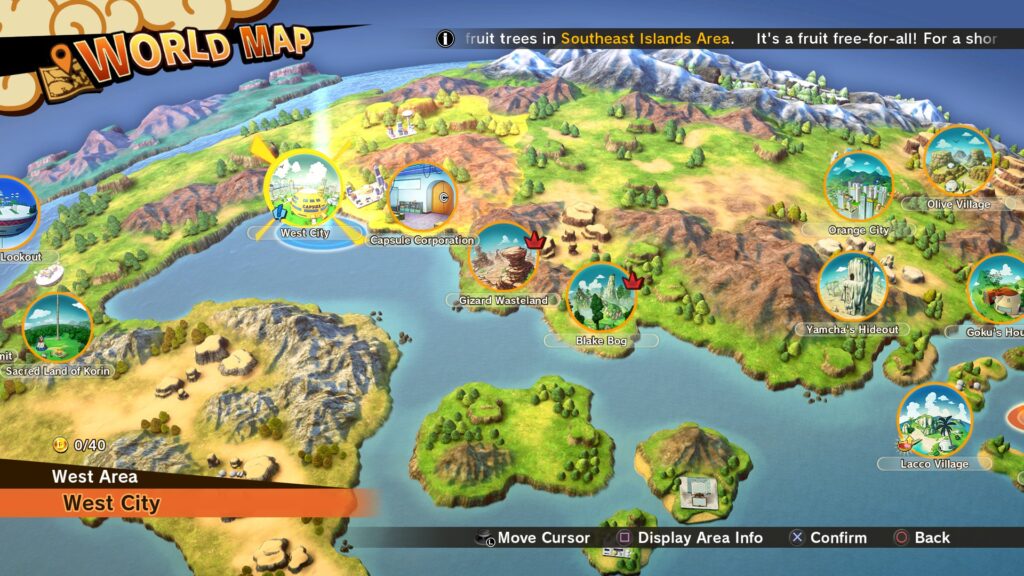
On the bright side, the combat more than makes up for many of Kakarot‘s lackluster RPG elements. The game’s battles are quite simple and straightforward mechanically, but do a fantastic job of replicating the look and feel of the anime’s fight scenes.
Regardless of which character you are playing as, you’ll have access to a basic melee combo, ranged ki attacks, a block, and a dodge. Each character can have four special attacks equipped at once, and they can be seamlessly executed at will.
These attacks use up ki, giving the game a degree of resource management to its battles. You can regain ki by taking a moment to power up, and once you hit a certain threshold, can momentarily enter a burst mode that allows you to chain multiple special attacks together.
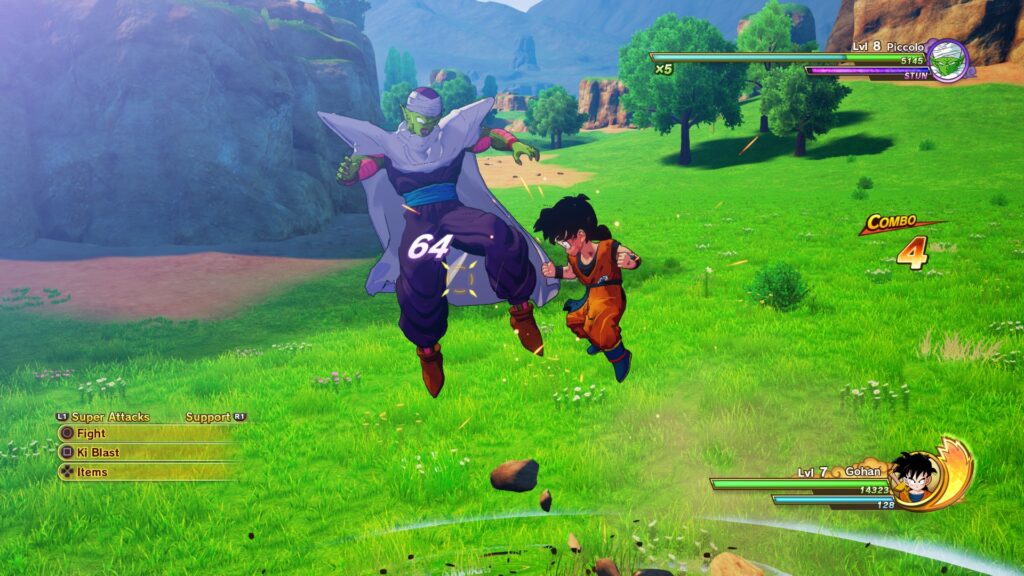
Many battles also feature teammates that have their own AI patterns that may focus on attacking enemies, healing allies, using support abilities, or chaining together combos with other fighters.
Your allies can be instructed to perform their own special attacks, and when the time is right, you can unleash devastating and extremely flashy combination attacks.
The main story battles are where the game is at its best, and are easily the most exciting parts of Kakarot. As aforementioned, the game strips out the majority of the filler during the anime’s fight scenes, and focuses solely on the most intense parts of the battles. Every punch, kick, Kamehameha, and Galick Gun looks and sounds exactly like it does in the anime.
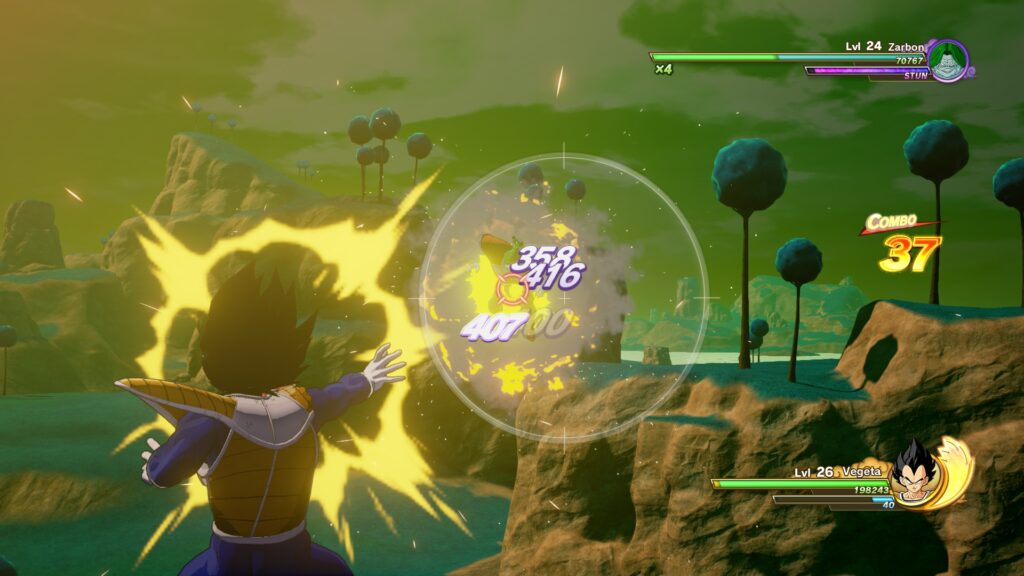
Environments have a degree of destructibility that further enhance the game’s already great looking combat. Characters can get slammed into the ground, leaving behind massive craters, while stray ki blasts can level mountains and forests.
The game’s camera is the only real issue with Kakarot‘s combat system, though it is admittedly a fairly minor one. Sometimes trees or other objects might momentarily get in the way of the action as the camera wildly swings around to keep up with the characters’ teleports and dodges.
This is especially noticeable when fighting multiple enemies or when a character unleashes a massive signature attack, which often change the camera angle to give players a better chance to dodge projectiles.
Its all more of a minor annoyance than a truly game breaking example of wonky camera angles though, and rarely will it ever directly interfere with your ability to fight enemies.
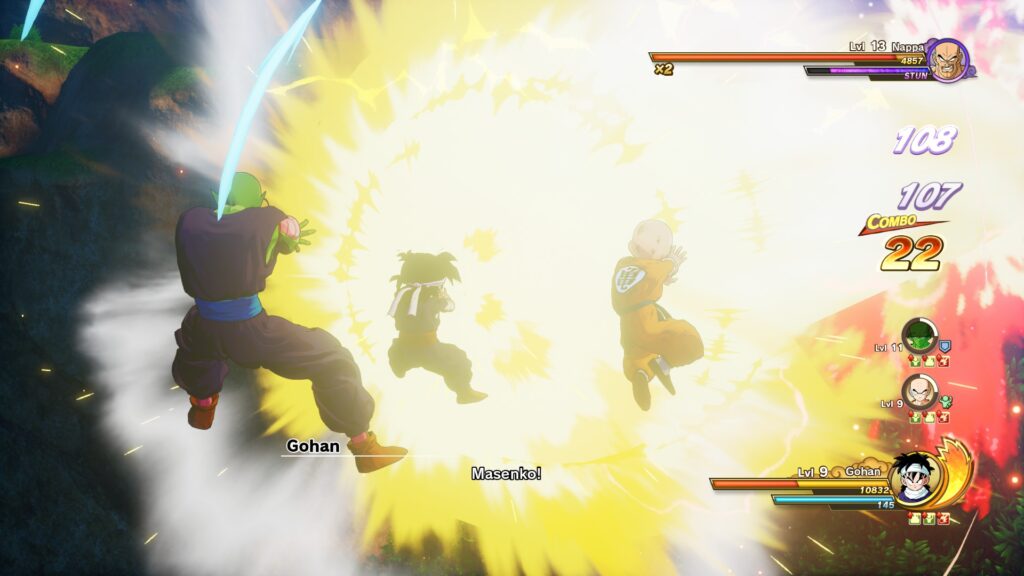
From a technical standpoint, Dragon Ball Z: Kakarot‘s PC port is fairly lazy. There really isn’t much of an options menu to speak of, and the game is hard locked at 60 FPS.
The performance is mostly fairly solid though, and I only really encountered some frame drops and screen tearing while flying around the open world segments.
As far as glitches go, I occasionally had instances of characters floating off or doing strange things during cutscenes, but nothing game breaking. I saw a decent number of people complaining about crashes when the game first launched, but I never personally experienced any.
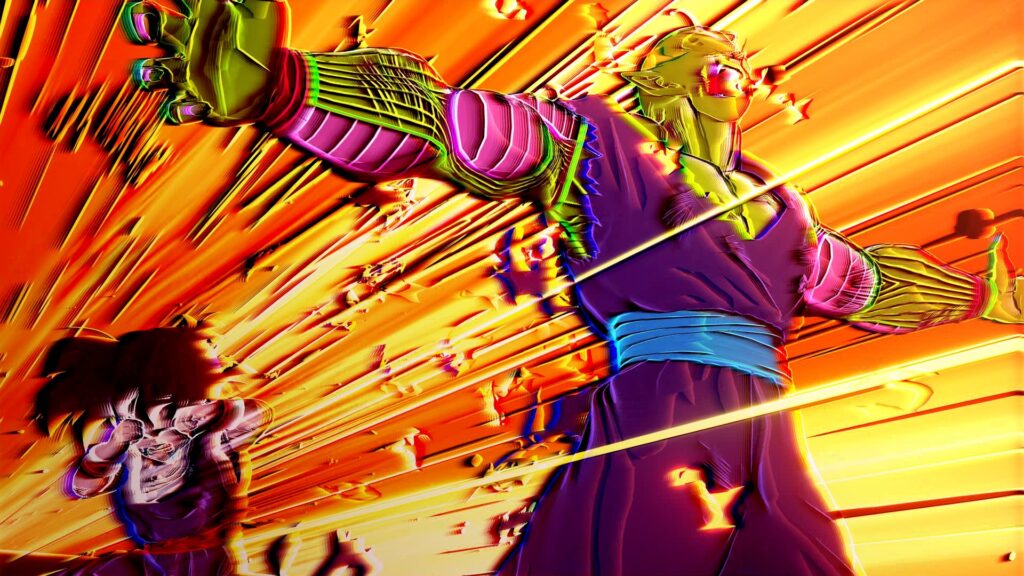
As I’ve stressed throughout this review, CyberConnect2 has put a lot of effort into making Kakarot an authentic experience, and that extends to the music and sound effects.
All the famous sounds and themes from the series are here, and Kakarot even features a reimagining of the original Japanese opening as the game’s intro. What original music is in the game blends well with the rest of the soundtrack, too.
Many of the original voice actors are back as well, in both the English and Japanese audio. That said however, the game is clearly meant to be played with Japanese audio, as very little effort seems to have been put into the English lip syncing.
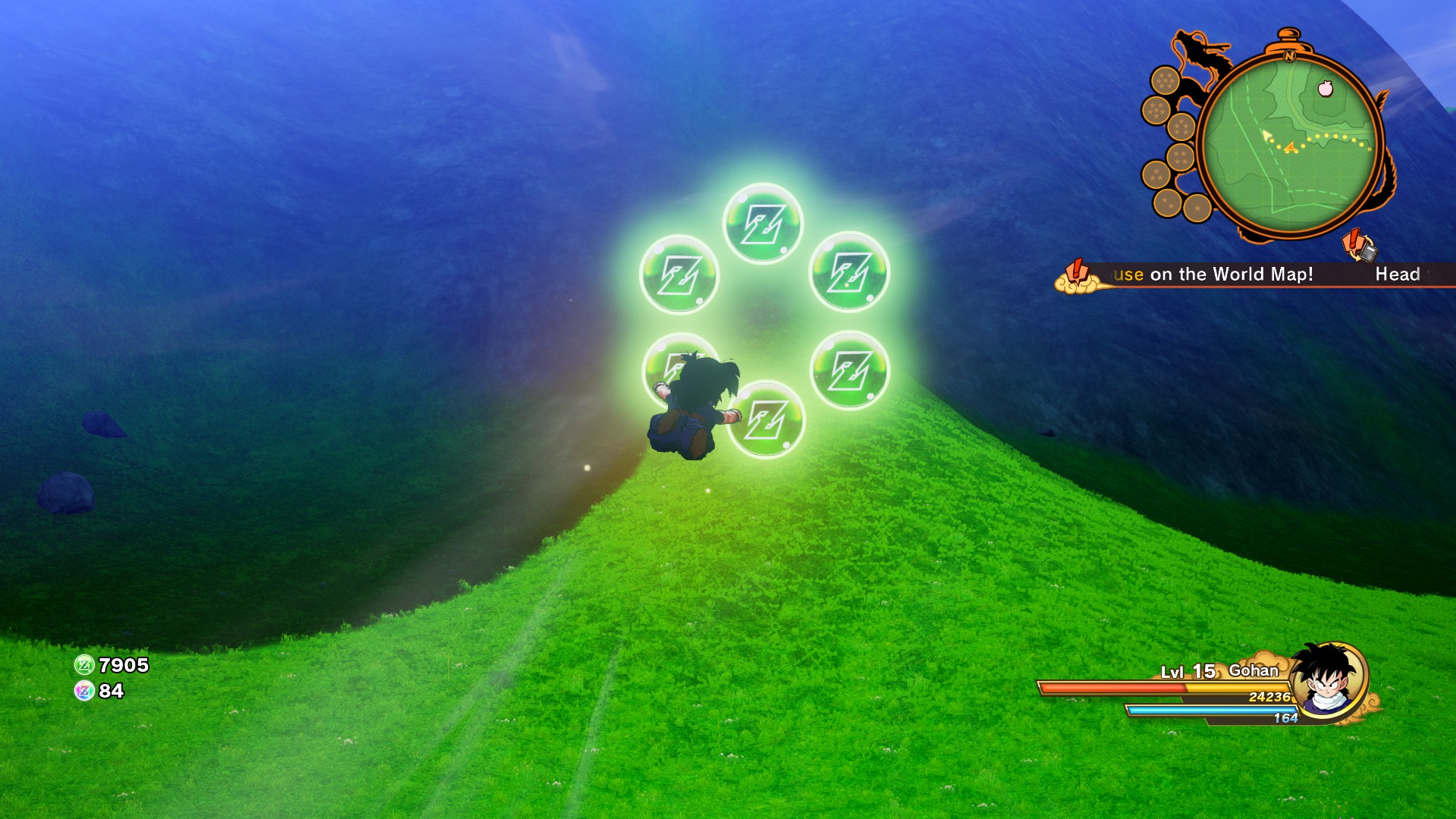
Dragon Ball Z: Kakarot is a well constructed trip down memory lane for fans of the franchise. The game faithfully recreates most of the anime’s major events and storylines without all the filler that often resulted in fights taking months to conclude during the TV run.
The game also wonderfully captures the look, feel, and charm of the series, with many of the voice actors returning and all the show’s music and sound effects present.
On the other hand, the game’s RPG elements, side activities, and lifeless environments are seriously lacking. The open world format and side quests feel like they are there just to pad the overall playtime, and are in stark contrast to how much heart and care seems to have went into recreating the anime’s main events and battles.
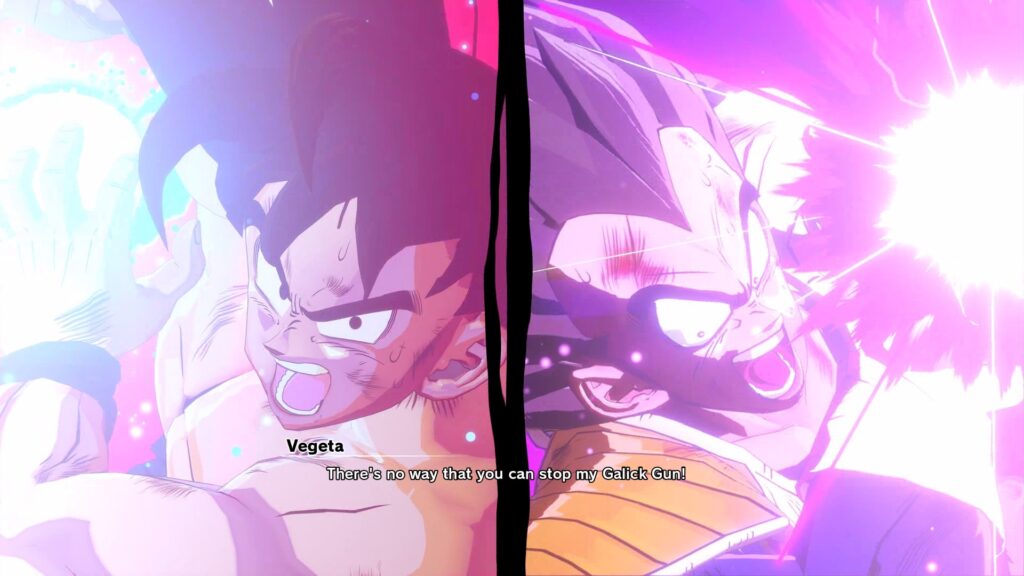
Despite all its faults, I still really enjoy Dragon Ball Z: Kakarot. It simply does such a good job translating the core events of Dragon Ball Z into a game that it’s impossible not to recommend it to nostalgic fans.
Even if the side quests are boring to actually play through, they are crammed full of fan service and cameos, as are the collectibles.
If you want to relive your memories of Dragon Ball Z without sitting down to watch all 291 episodes, then you really can’t go wrong with playing through the main storyline of Dragon Ball Z: Kakarot.
Dragon Ball Z: Kakarot was reviewed on Windows PC using a review copy provided by Bandai Namco Entertainment. You can find additional information about Niche Gamer’s review/ethics policy here.